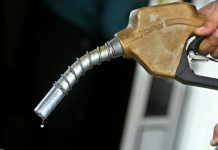
Aug. 30 (UPI) — With the largest refinery in the United States closed Wednesday, crude oil prices continued to bear the brunt of Tropical Storm Harvey.
“At 5 a.m., Motiva began a controlled shutdown of the Port Arthur refinery in response to increasing local flood conditions,” the company said in a statement emailed to UPI. “Return to service is contingent upon recession of flood waters in the area.”
Motiva’s facility has the capacity to process about 600,000 barrels of oil per day and the closure adds to the growing number of facilities closed because of the storm. Harvey is moving east toward refinery centers in Louisiana and a research note from Goldman Sachs said as much as 10 percent of the regional refinery capacity could be offline for several months, based on comparisons from Hurricanes Katrina and Rita.
Crude oil prices have moved lower for much of the week in response to the tropical storm. Phil Flynn, senior market analyst for the PRICE Futures Group in Chicago, said in response to emailed questions that prices are down because about 16 percent of total U.S. refining capacity is offline and crude oil levels are backing up in the storage hub at Cushing, Okla.
The price for West Texas Intermediate, the U.S. benchmark for the price of oil, was down 0.95 percent to $46 per barrel as of 9:15 a.m. EDT. Brent, the global benchmark, was down 0.9 percent to $51.53 per barrel.
Brent is down about 2 percent and WTI is down 7 percent from the start of August. Flynn said crude oil prices will likely climb if the attention shifts from refinery outages to any damage to oil and gas production facilities.
Markets may react to official data from the U.S. Energy Information Administration on oil and gasoline inventories last week, though the market reaction to industry data from the American Petroleum Institute late Tuesday was muted. A forecast from pricing group S&P Global Platts predicted gasoline stocks declined 1.9 million barrels and crude oil inventory levels dropped 1.5 million barrels from last week.
Data next week will provide a better indication of the extent of the damage to the U.S. energy sector from Tropical Storm Harvey.
Elsewhere, the U.S. Commerce Department reported real gross domestic product increased at an annual rate of 3 percent during the second quarter, the strongest growth in more than two years. First quarter real GDP growth was 1.2 percent.
“With this second estimate for the second quarter, the general picture of economic growth remains the same,” the Commerce Department’s notice read.





